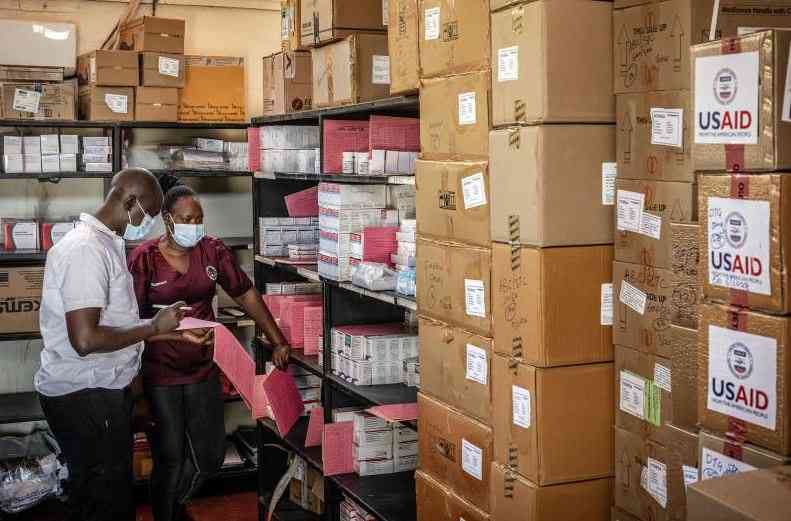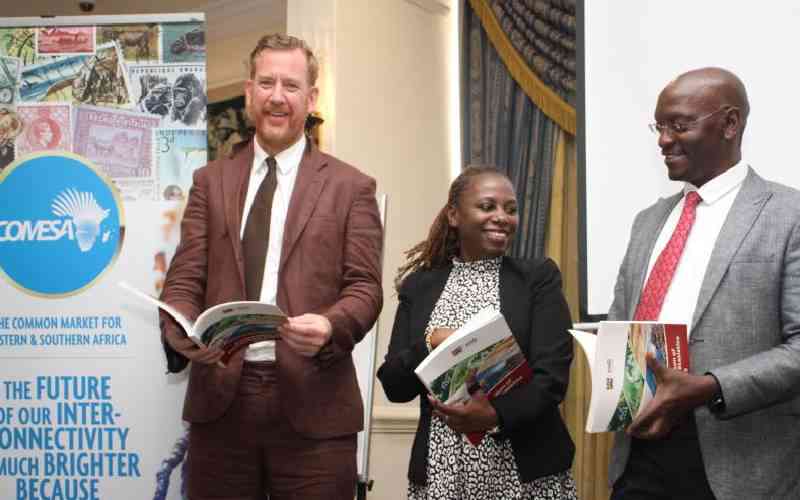Without USAID, we need hyperlocal war on malnutrition

The recent closure of USAID marks a pivotal moment in global development. For over six decades, USAID was a major funder of health, agriculture, education, and nutrition programmes across developing countries. Its sudden exit leaves many nations facing a difficult question: can systems built on foreign aid survive without it?
This question is urgent in the fight against malnutrition, a silent crisis that stunts growth, undermines education, and weakens economies more so in developing countries. According to the African Development Bank, over 200 million children in Africa suffer from chronic undernutrition.
In India, nearly 35 per cent of children under five are stunted, highlighting that malnutrition is a widespread challenge beyond any one region. Malnutrition is more than hunger. It contributes to nearly half of child deaths and reduces national productivity by up to 11 per cent. USAID-funded programmes, including school feeding and maternal nutrition, have long been lifelines. Now, with those supports ending, countries must urgently find alternatives. One powerful solution revealed by USAID’s exit is the strength of hyperlocal approaches grounded in local knowledge, culture and trust.
In Uganda, church groups and women’s savings collectives run community kitchens where expectant mothers learn to prepare nutritious meals from local grains and vegetables. In northern Nigeria, entrepreneurs produce fortified cassava and maize flours that improve school meals and create local jobs. In western Kenya, women-led groups use affordable tools like SoyaKits to process locally grown soya beans into fortified porridge, milk, and snacks.
These products feed children and families suffering from protein-energy malnutrition and generate income through small businesses. This approach is not limited to Africa. In Bangladesh, families grow nutrient-rich vegetables and raise poultry in backyard gardens, improving household nutrition selling surplus to their communities. These hyperlocal programmes succeed because they are trusted, culturally relevant, and sustainable. Advice from local health workers with lived experience and familiar foods resonate far more than “expert advice” from foreign directives.
The end of USAID should not be seen only as a setback but as an opportunity to shift development from donor dependency toward local empowerment. Hyperlocal approaches are already proving effective, cost-efficient, and resilient. Malnutrition remains a public health emergency. It weakens immune systems, increases maternal and child mortality, and burdens healthcare systems.
Governments, civil society, and private sectors must recognise nutrition as foundational and invest in grassroots initiatives already making a difference. The tools and knowledge exist. What is needed now is political will and sustained support to let communities lead and thrive.
While foreign donors have played a vital role, the solution to malnutrition ultimately depends on the success of initiatives and leadership emerging from local communities themselves. This is not a new concept—many development partners have called it ‘country-owned, country-led.’
In USAID language, it was known as the ‘Journey to Self-Reliance.’ That journey, for better or worse, has ended. Now, self-reliance must begin.
-The writer is a public health management specialist. [email protected]
Recommended Articles
Nigerian Governors Release Statement On Buhari's Death

The Governors stated that Buhari displayed profound moral courage, character, and an amazing sense of duty during his li...
State to amend Statistics Act in Sh19.1b data collection plan

The government plans to revise the Statistics Act (2006) in a Sh19.1 billion strategy to revamp how data is collected an...
Beyond Publications and Prestige: Ghana scholarly society charts the path for research that drives real development - MyJoyOnline

The Ghana Scholarly Society is mobilising global Ghanaian academics to turn research into action, bridging the gap betwe...
Ovensehi Technologies set to launch in Africa

Nigerian entrepreneur and business visionary Saint Joseph Ovensehi is set to launch a game-changing tech venture, Ovense...
GAH Elite sponsors tennis tournament to celebrates Princess Oghene

The Nation Newspaper GAH Elite sponsors tennis tournament to celebrates Princess Oghene
Kenya Simbas bow out of 2027 Rugby World Cup contention

Kenya Simbas on Sunday bowed out of the 2027 Rugby World Cup contention after losing to Zimbabwe 29-23 in a tight Rugby ...
You may also like...
Diddy's Legal Troubles & Racketeering Trial

Music mogul Sean 'Diddy' Combs was acquitted of sex trafficking and racketeering charges but convicted on transportation...
Thomas Partey Faces Rape & Sexual Assault Charges

Former Arsenal midfielder Thomas Partey has been formally charged with multiple counts of rape and sexual assault by UK ...
Nigeria Universities Changes Admission Policies

JAMB has clarified its admission policies, rectifying a student's status, reiterating the necessity of its Central Admis...
Ghana's Economic Reforms & Gold Sector Initiatives

Ghana is undertaking a comprehensive economic overhaul with President John Dramani Mahama's 24-Hour Economy and Accelera...
WAFCON 2024 African Women's Football Tournament

The 2024 Women's Africa Cup of Nations opened with thrilling matches, seeing Nigeria's Super Falcons secure a dominant 3...
Emergence & Dynamics of Nigeria's ADC Coalition

A new opposition coalition, led by the African Democratic Congress (ADC), is emerging to challenge President Bola Ahmed ...
Demise of Olubadan of Ibadanland
Oba Owolabi Olakulehin, the 43rd Olubadan of Ibadanland, has died at 90, concluding a life of distinguished service in t...
Death of Nigerian Goalkeeping Legend Peter Rufai

Nigerian football mourns the death of legendary Super Eagles goalkeeper Peter Rufai, who passed away at 61. Known as 'Do...